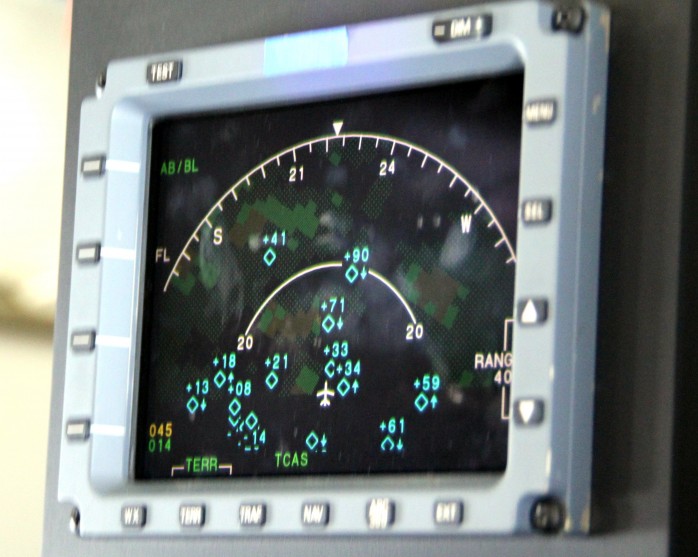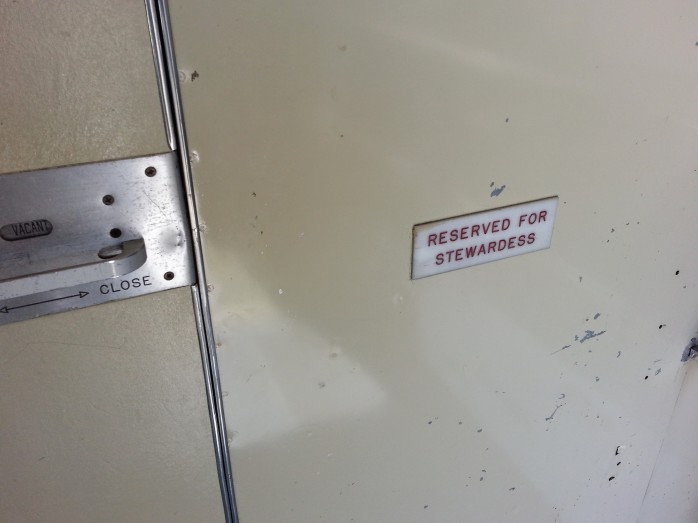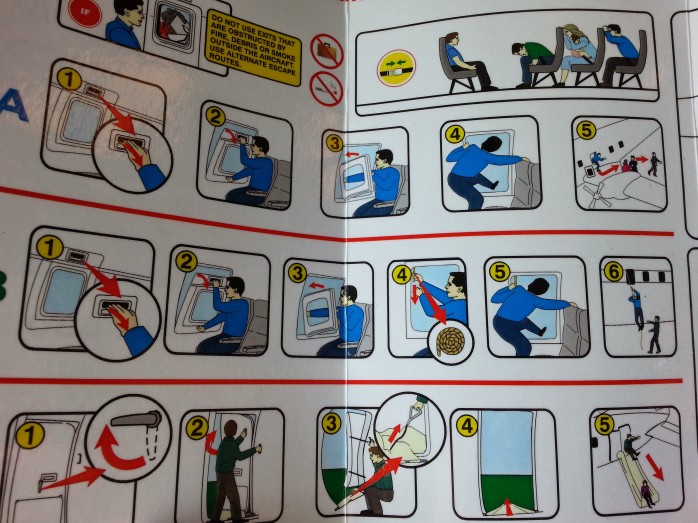Long distance relationships are the worst. “Is he/she worth waiting for? Are they feeling the same way I do?” “Am I kidding myself thinking this can work?” “Would I be better off dating the mailman instead? At least he comes to my house every day.” “Does my girlfriend even exist or is this just a Nigerian guy conducting an elaborate credit card scam?”
I get it. I’ve been there. Long distance relationships suck. There’s no way around it. In all of my years I’ve never met someone who has said, “Yeah, my boyfriend lives in Finland, it’s great!” On the contrary, everyone I’ve met in a long distance relationship can relate to the slow agonizing feeling that takes place over months or even years — that feeling that your heart is slowly being carved out by a butter knife and replaced with Skype calls and open chat windows.
As a young man who was terrified of any sort of commitment whatsoever, I found that I could only allow myself to fall for a girl if she was at least 500 miles away.1
All three of my significant relationships have involved long distance in some way. The first one, we both genuinely tried to make it work, but things fell apart spectacularly. The second one we both agreed that our lives were taking us to different parts of the world and we were probably better off letting it go. The third, we immediately made plans to end the distance as soon as possible and then did.2
So I guess what I’m saying is, I’ve seen both sides of the long distance relationship coin. I’ve seen them implode and I’ve seen them fizzle out. I’ve seen them be worth the pain and loneliness and also reach the moment of needing to let go.
When it comes to surviving the distance, here’s what I’ve learned is most important:
1. Always Have Something to Look Forward To Together
What kills long distance relationships is the constant underlying uncertainty to everything. “Is this all worth it?” “Does she still feel the same way about me as she did before?” “Is he secretly meeting other girls without me knowing?” “Am I kidding myself with all of this? Maybe we’re horrible for each other and I don’t know it.”
The longer you two are apart, the more these uncertainties will fester and grow into legitimate existential crises.
That’s why when making any long distance relationship work it’s necessary to always have some date that you are both waiting for. Usually, this will be the next time you are both able to see each other. But it can be other major life moments as well — applying for jobs in the other person’s city, looking at apartments together, a vacation together, and so on.

The minute you stop having some milestone to look forward to together, you’ll be stuck in emotional limbo. One thing that is true about all relationships is that if they’re not growing, then they’re dying. And this is more important than ever in long distance relationships. You must be evolving towards something. You must both have a converging trajectory on some point on the horizon. Otherwise you will inevitably drift apart.
2. Be Slow to Judge
A funny thing happens to humans psychologically when we’re separated from one another. We’re not able to see each other as we truly are. When we’re apart from one another or have limited exposure to a person or event, we start to make all sorts of assumptions or judgments that are usually exaggerated or untrue.3
This can manifest itself in various ways within a long distance relationship. In some cases, people get insanely jealous or irrationally possessive of their partner because they perceive every casual social outing without them as potentially threatening to their relationship. They become paranoid, asking who the fuck is Dan, tell me who the fuck this Dan guy is, and why is he writing on your Facebook wall — oh, he’s your stepbrother? I didn’t know you had a stepbrother. Why didn’t you tell me you had a stepbrother, are you hiding something from me? OK, maybe I wasn’t listening when you told me, but I still don’t want you hanging out with Dan, got it?

Other people become extremely critical and neurotic that every small thing that goes wrong is an end to the relationship. Like if the power goes out and their partner misses their nightly Skype call, they sit there thinking to themselves that this is it, the relationship’s over, he finally forgot about me.
Other people go the other direction and start idealizing their partner as being perfect in a bunch of ways that they’re actually not. After all, if your partner isn’t in front of you all day every day, it’s easy to forget all of the little obnoxious parts of their personality and just imagine how perfect they must be.
All of these irrational fantasies are unhelpful.4 And when stuck in a long distance scenario, it’s important to distrust many of your own judgments and inclinations to a certain degree. Remind yourself that you really don’t know what’s going on and the best thing you can do at any moment is simply ask your partner.
3. Make Communication Optional
A lot of long distance couples create rules or expectations that they should have X number of calls or that they need to talk every night at a certain time. You can even find some articles online recommending this sort of behavior.
It may work for some people, but I’ve always found that communication should happen organically and unconditionally. You talk to each other when you want to, not because you have to. And if that means going 1-2 days without communicating, then so be it. People get busy, after all. And periodically having a few days to yourself is actually pretty healthy, I’d say.

When you force communication, two things can happen. The first is that when you inevitably hit days that you don’t have much to talk about (or don’t feel like talking), you’ll half ass it and fill your communication with a bunch of filler. Great, now you’re half-assing your relationship and spending time with your partner not because you want to but because you feel obligated. Welcome to every shitty marriage ever.
This half-assed communication often creates more problems than it solves. Like, if your partner seems more interested in his tax returns than catching up with you, chances are you should just hang up and try again in a couple days. There is such a thing as overexposure.
The second problem that can happen from forcing communication is that one or both people can begin to resent feeling obligated to the other person all of the time. This resentment then sparks stupid fights which almost always devolve into some form of, “I’m sacrificing more than you are!” “No, I’m sacrificing more than you are!”
These arguments never lead to anywhere useful.
The best way to go is to make all communication optional. Both of you can opt out at any time. The trick is to not take these opt outs personally when they happen. Understand that your partner is a fully individual human being outside of their relationship with you, and that to be happy they often need to attend to other things.
Doing this requires something called “trust.” It’s a novel concept. But you should try it out sometime.
4. Make Sure The Distance is Temporary
A long distance relationship cannot survive without hope. And for there to be hope, there must be some possibility that you two will one day be together and achieve your Happily Ever After.
Without that shared vision of Happily Ever After, everything else will quickly begin to feel meaningless.
Remember, love is not enough. You both need to have life visions that are aligned, shared values and mutual interests. If she’s taking a 10-year contract working for the Singaporean government, and he makes a career dogsledding around the polar ice caps, well, then there’s not much hope for that relationship, no matter how much they may love each other.
Not only must there be some shared vision of a possible future for you together, but you both must also feel as though you’re working toward that vision. If he’s in Los Angeles and you’re in New York, nothing will kill the relationship faster than applying for jobs in London and Hong Kong.

In my second relationship, my girlfriend took a job working in Africa. Meanwhile, I toiled away in the US with no money trying to get my first internet business off the ground. All hope for making it work was removed from the equation and we soon broke up.
My current girlfriend is Brazilian. We began dating while I was living there in 2012. I left after a few months and we kept in touch. Both of us were battle-worn veterans of failed long distance relationships, and one of our first conversations was that if we didn’t feel that there was a possibility of us living in the same city again within a year, then there was no point in keeping in touch.
Obviously, this wasn’t an easy conversation to have. But we had it because we both knew it was necessary if we were going to continue.
Six months later, I made the commitment to move back down to Brazil and stay there with her until we could figure other plans out.
Long distance relationships can only work if both partners put their money where their genitals are. OK, that sounded weird, but what I mean, is that you have to make the logistical, life-rearranging commitment to one another for them to have any chance of working. Paradoxically, you end up with this weird dynamic where long distance relationships force you to make much more significant commitments to a person who you’ve had far less exposure to. It’s like buying a car when you’ve only seen one picture of it.
Is it worth it? This is the question I get most often from readers. On one level, yes, it’s always worth it. Because even if the relationship goes down like a Malaysian Airlines flight,5 you will have learned a lot about yourself, about intimacy, and about commitment in the process.
On another level, it’s hard to tell. Because when you’re stuck in a long distance relationship, you don’t really know what it’s like to date the other person. You only have this halfway, vague idea of what it’s like.
Sure, you know their personality and their attractive qualities. But you don’t know the reality. You don’t know each other’s ticks. How she avoids eye contact when she’s sad. The way he leaves a mess in the bathroom and then denies making it. How she’s always late to important events. The way he makes excuses for his mother’s unacceptable behavior. Her tendency to talk through movies. His tendency to get easily offended at comments about his appearance. And so on.
You don’t get a sense for the actual relationship until you’re there, in person, and in each other’s faces non-stop, whether you want to be or not. This is where true intimacy exists. In the constricted personal space between two people who have spent way, way, way too much time around each other. This intimacy is sometimes dispassionate. It’s sometimes obnoxious. It’s sometimes unpleasant. But it’s capital-R Real. And it’s what determines if a relationship will last or not.
Distance prevents this constricted intimacy from ever forming in a meaningful way. When we’re apart it’s too easy to idealize and romanticize each other. It’s too easy to overlook the mundane, yet important differences. It’s too easy to get caught up in the drama of our minds instead of the calm and boring truths of our hearts.
Can it work? Yes, it can. Does it work? Usually, no. But then again, that’s true for the vast majority of relationships.6 And it doesn’t mean we shouldn’t ever at least try.
- This is common among avoidant attachment types. They only feel comfortable opening themselves up to intimacy with people they know aren’t going to be around much.↵
- We’re still together today.↵
- I wrote an article about how this effect also explains why so many people are assholes on the internet.↵
- Stafford, L., & Merolla, A. J. (2007). Idealization, reunions, and stability in long-distance dating relationships. Journal of Social and Personal Relationships, 24(1), 37–54.↵
- Sorry, too soon?↵
- Stafford, L., Merolla, A. J., & Castle, J. D. (2006). When long-distance dating partners become geographically close. Journal of Social and Personal Relationships, 23(6), 901–919.↵
The post How to Survive a Long Distance Relationship appeared first on Mark Manson.








